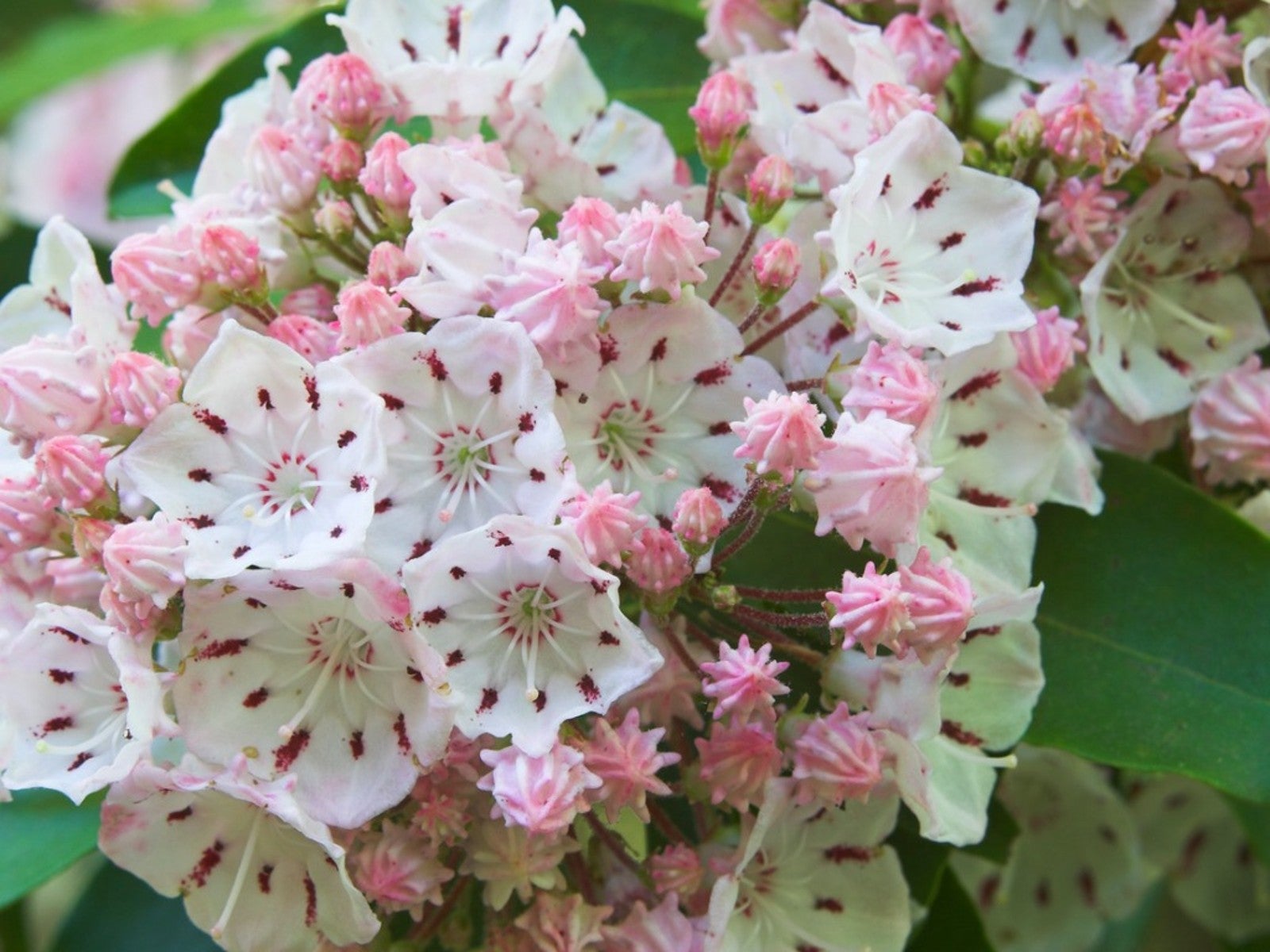Mountain Laurel Growing: Care Of Mountain Laurel In The Landscape


Grown for its showy late spring and summer flowers and attractive, evergreen foliage, mountain laurel (Kalmia latifolia, USDA zones 5 through 9) is a colorful asset to borders and foundation plantings, and it looks fantastic in mass plantings.
It's sometimes called a calico bush because the pink or white flowers usually have dark pink or maroon markings. Native to the eastern U.S., you can often find mountain laurel growing wild among native azaleas and rhododendrons.
Mountain Laurel Information
You'll find many lovely cultivars of mountain laurel to choose from, thanks in large part to Dr. Richard A. Jaynes of Hamden, Connecticut. Here are just a few of his enticing creations:
- ‘Elf' is a dwarf that grows 3 feet (1 m.) tall with pale pink or white blossoms.
- ‘Heart of Fire' has deep red buds that open to pink flowers with dark pink edges on a 5 foot (1.5 m.) shrub.
- ‘Raspberry Glow' grows up to 6 feet (2 m.) tall. The burgundy buds open to raspberry pink flowers that keep their color when grown in shade.
- ‘Carol' forms a low, rounded mound of dark green foliage. The buds are red and the flowers are bright white.
- 'Snowdrift' has white blooms with a dab of red in the center. It grows about 4 feet (1 m.) tall.
How to Grow a Mountain Laurel
Mountain laurel looks best when grown in dappled sunlight, but it also grows well in full sun or partial shade. Avoid locations with full sun in combination with reflected light from heat-reflecting southern or southwestern walls. Partial shade is best in hot, southern climates. In deep shade the flowers lose their bright colors and may develop leaf spot.
If azaleas and rhododendrons grow well in the area, mountain laurel will thrive. The shrubs need moist but well-drained, acidic soil. They won't grow well in clay soil. It's important not to give the shrubs too much fertilizer, so don't plant them in or near lawns fed with high-nitrogen products.
Care of Mountain Laurel
Amend the soil with compost when planting mountain laurels. If you have several shrubs, amend the entire bed. Add the compost to the fill dirt if you are only planting one or two shrubs. When adding organic matter to the fill dirt, dig the hole as deep as the root ball and three times as wide so the shrub will have plenty of organic soil where it can spread its roots.
Mountain laurel has a shallow root system and needs watering more often than most shrubs. New plantings need 2 inches (5 cm.) of water each week for the first season. The average sprinkler system delivers about an inch (2.5 cm.) of water per hour, so you'll need to run the system two hours. Use organic mulch, such as pine needles or shredded bark, to help the soil hold moisture between waterings.
Sign up for the Gardening Know How newsletter today and receive a free copy of our e-book "How to Grow Delicious Tomatoes".
These shrubs don't need a lot of fertilizer and may bloom poorly if you apply too much. Use a fertilizer designed for acid-loving plants mixed at one-quarter strength once a year in spring. You can also add a thin layer of compost to the soil for additional nutrients and to add to the organic matter of the soil.
Mountain laurel begins forming the buds for next year's flowers soon after the flowers fade. Prune the shrub right after flowering so that you don't remove the new buds. Cut off faded flowers promptly so the shrub can focus its energy on growth rather than seed development.

Jackie Carroll has written over 500 articles for Gardening Know How on a wide range of topics.